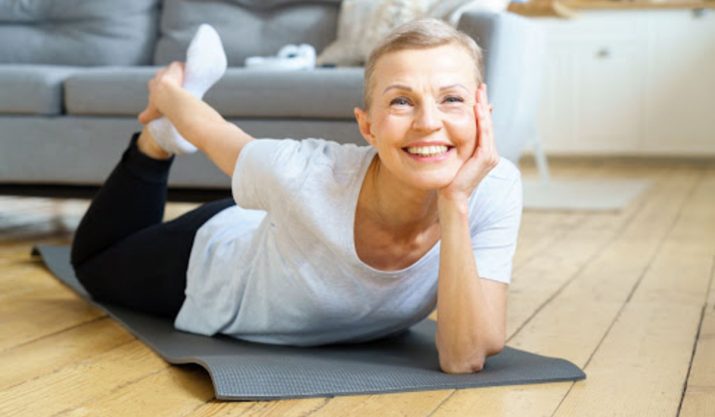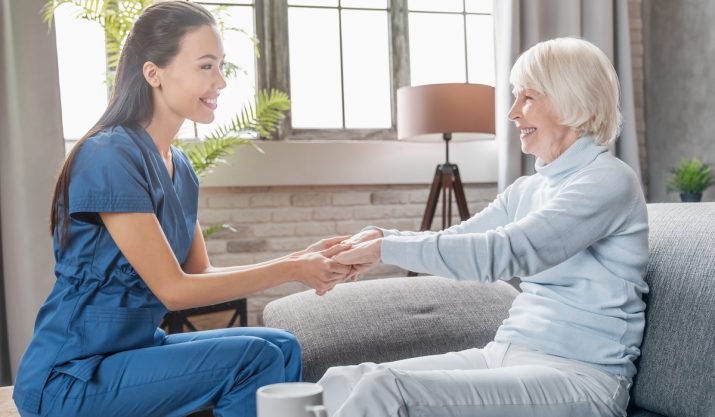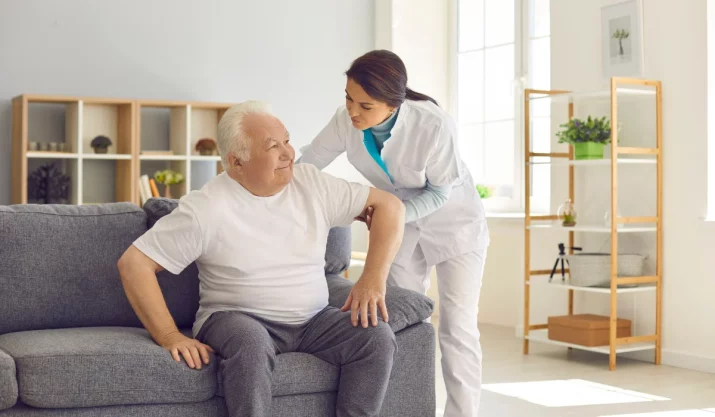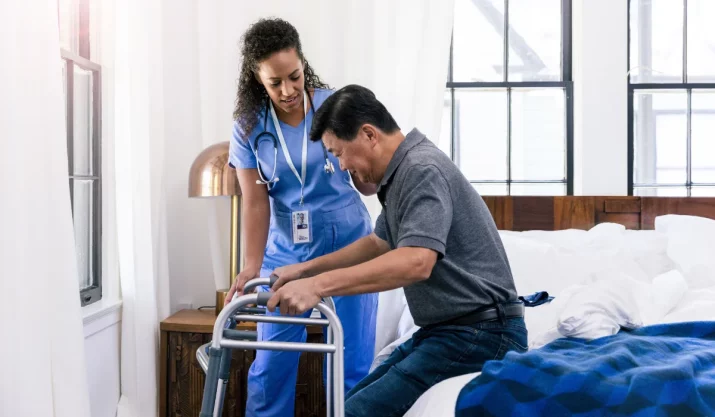The Science Behind Compression Socks & Why Seniors Should Try Them

You might associate compression socks with athletes. But pregnant women, waiters, and the elderly all use these specialty socks.
The main focus of compression socks is circulation, allowing blood to more easily pass through the feet, lower legs, and back up to the heart.
As we age, the veins that carry the blood get more worn out, leading to common issues like varicose veins, where blood pools and veins stretch. In addition, the blood flow has a more challenging time moving. Slower moving blood makes for poor circulation.
So this is why seniors should be considering gradient compression socks to assist with age-related circulation issues and other conditions which will benefit astronomically from wearing them.
How Compression Helps Circulation
Compression on the legs significantly reduces the width of stretched-out veins, allowing them to return to their original shape. Helping to move those veins back to their correct form helps the valves function better.
One of the more vital benefits of compression socks for the elderly is that the gradient technology on compression garments applies more pressure around the ankle and slowly decreases pressure going up the leg. The reason for this is that as the blood moves towards the heart, the effects of gravity aren’t as necessary, so the support is focused where the pressure is needed most.
The Removal of Lactic Acid
The pressure increases blood flow, which, in turn, increases the muscle’s supply of oxygen and reduces lactic acid. Lactic acid accumulates when cells respirate as the body’s way of producing energy, and it builds due to overexertion of muscles.
When lactic acid builds up in the muscles, it can be excruciating. In addition, it inhibits muscle function and happens more regularly with age since muscle mass tends to decrease. So increasing oxygen in the areas where lactic acid is building up is crucial. Compression socks are a helpful way to do this.
Compression for Prevention of Blood Clots
Sitting for more extended and longer periods contributes to blood clots. When the blood doesn’t flow properly, it can build up and cause issues, but wearing compression socks can help to combat this. Compression socks help prevent blood from clotting by promoting constant and consistent blood flow throughout the extremities.
Elderly adults are at a higher risk for blood clots since, with age, the circulation across the body decreases. In addition, seniors who have had surgery, suffer from obesity, or have a family history of blood clots are also at greater risk of getting them, so wearing compression socks will be necessary to help prevent blood clots.
Compression for Treating Varicose Veins
Seniors are also at greater risk for varicose veins, which are unattractive and can cause pain and discomfort. In addition, when you are on your feet for extended periods, the blood starts to settle and pool around the ankles and feet, and the build-up of fluid causes swelling and pain, resulting in embarrassing spider veins.
Wearing compression socks helps direct the blood flow upward so it doesn’t pool around the ankle and cause those spider veins to develop.
What Kind of Compression Socks Work Best?
Compression socks apply different degrees of compression, so you must pay attention to the various guides. In addition, you may want to speak to your doctor for recommendations on specific socks, especially if you are buying them for a medical condition like blood clots or varicose veins.
Compression socks are measured in millimeters of mercury (mmHg), a pressure measurement. Here’s a breakdown of the different types of compression sizes you will find:
15 to 20 mmHg
These are typically used for daily wear and travel so you can be comfortable in them for long periods. However, this compression level may not be tight enough if you are treating a medical condition or in medical recovery.
20 to 30 mmHg
The level of compression for these socks is great for helping with conditions like mild edema or spider veins. These are also a type that doctors recommend to help improve circulation after surgery when you are unable to move normally. So if you have to be bed-ridden for a time, you should consider getting this pressure size to help you keep the blood flowing through your legs and feet.
30 to 40 mmHg
These are the more substantial level of compression socks, and they may even be labeled as “prescription” socks where you will need a doctor’s script to obtain them. Severe swelling in the legs and post-surgery issues will require this compression level. In addition, if you suffer from other severe symptoms with your legs, including restless leg syndrome or blood clots, check with a doctor about getting these compression socks.
Some compression socks are labeled a little differently, with “Class I” or “Class II” Roman Numerals—the higher the number, the greater the compression. For example, a Class IV can be as high as 50 to 60 mmHg at the ankle. Talk to your doctor about specific pressure levels to ensure that you are getting the right compression socks to suit your needs.
Why Should Seniors Wear Compression Socks?
Compression socks also provide benefits to help seniors to stay active as they age. With age, the amount of tiredness in the legs and feet will happen more frequently, and older bodies aren’t as equipped to fight these problems. Seniors may also be required to obtain mobility devices and not walk as much, so compression socks can add a high level of comfort and pain relief. In addition, they will normalize a more natural blood flow, fight cold feed, reduce swelling and tingling, and have the added benefits of revitalizing your skin tissue for better movement.
For senior citizens who need assistance with blood circulation in their lower extremities, have certain chronic health issues, or feel that their legs and feet are constantly tired, compression socks are the answer.






